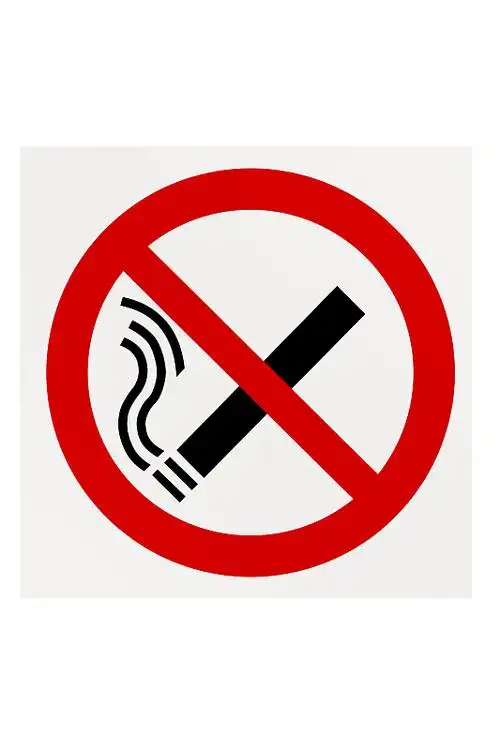The Unseen Expansion: How Tobacco Use Increases Functional Residual Capacity and Reshapes Lung Function
We often hear about the detrimental effects of smoking on lung health, typically framed in terms of destruction and loss. We picture emphysema destroying delicate air sacs and chronic bronchitis clogging airways. However, there's a more subtle, yet profoundly significant, physiological change that occurs in the lungs of long-term tobacco users—an actual increase in a specific lung volume known as the Functional Residual Capacity (FRC). This phenomenon, which might sound counterintuitively positive, is not a sign of enhanced health but a crucial indicator of the lungs' struggle against the relentless assault of tobacco smoke. This article delves into the mechanics of how tobacco smoke fundamentally alters lung mechanics, leading to this increase in FRC, and what it truly means for respiratory well-being.
Understanding the Lung's Natural Balance: What is Functional Residual Capacity?
To grasp why an increase in FRC is problematic, we must first understand its role in healthy lungs. Imagine your lungs at the end of a normal, gentle exhalation. You haven't forced the air out; you've simply relaxed your breathing muscles. The volume of air remaining in your lungs at this precise moment is your Functional Residual Capacity. It's a vital equilibrium point, a physiological "sweet spot."
FRC serves two critical purposes:
- It keeps the airways open. The pressure of this remaining air acts as a stent, preventing the smaller airways from collapsing.
- It ensures efficient gas exchange. By maintaining a reservoir of air in the alveoli (the tiny air sacs where oxygen enters the blood and carbon dioxide leaves), FRC allows for continuous oxygenation of the blood between breaths, smoothing out the peaks and troughs of the breathing cycle.
This balance is maintained by a delicate tug-of-war between two opposing forces: the natural elasticity of the lungs, which want to recoil inward and push air out, and the natural spring-outward tendency of the chest wall. FRC is the volume where these two forces are perfectly balanced. Tobacco smoke disrupts this balance catastrophically.
The Tobacco Onslaught: From Elasticity Loss to Air Trapping
The primary mechanism through which tobacco increases FRC is the destruction of the lung's elastic fibers. These fibers, made of proteins like elastin, are what allow your lungs to spring back after you inhale. In healthy lungs, this elastic recoil is powerful and provides the main driving force for exhalation.
Tobacco smoke incites a chronic inflammatory response. Influxes of immune cells like neutrophils and macrophages release enzymes, most notably elastase, whose job is to break down foreign invaders and damaged tissue. In a healthy person, this activity is kept in check by a protective protein called alpha-1-antitrypsin (A1AT). However, the chemicals in tobacco smoke not only overwhelm this system by stimulating excessive elastase production but also directly deactivate the protective A1AT. The result is a net loss of elastin—the very scaffolding that gives the lung its spring.

As the lungs lose their elasticity, their ability to recoil and push air out diminishes. This is the fundamental engine behind the annual growth rate of functional residual capacity. With each passing year of smoking, cumulative damage to the elastic fibers reduces recoil pressure, making it progressively harder to exhale fully. Consequently, the equilibrium point of FRC—the volume where the now-weakened lung recoil balances the chest wall's expansion—shifts to a higher volume. The lungs become chronically hyperinflated.
This process is dramatically exacerbated by a second phenomenon: air trapping due to small airway closure. The inflammation caused by smoking also leads to swelling of the airway walls and an increase in mucus production. This narrows the small bronchioles. Combined with the loss of the elastic tethers that normally hold these small airways open, they are prone to collapsing prematurely during exhalation. This traps air behind the collapsed airways, preventing it from being exhaled. This "air trapping" directly contributes to the elevated FRC. It's like trying to deflate a balloon through a narrow, floppy straw that keeps closing—a significant amount of air remains trapped inside.
The Clinical Picture: Why an Increased FRC is a Burden, Not a Benefit
While it might seem that having more air in the lungs could be advantageous, this increased FRC, or static lung hyperinflation, places a severe mechanical burden on the entire respiratory system.
-
The Work of Breathing Increases: Breathing normally is effortless. But for a person with a high FRC, every breath starts from a more inflated baseline. The diaphragm, the primary muscle of inspiration, is already flattened and shortened, putting it at a mechanical disadvantage. To draw in a normal tidal breath, the respiratory muscles have to work much harder. This leads to the sensation of breathlessness, even during mild activities like walking or climbing stairs—a key symptom of tobacco-related lung disease.
-
Inefficient Gas Exchange: The regions of the lung where air trapping occurs are poorly ventilated. While blood may still flow to these areas, the fresh air cannot get in to oxygenate it, and the carbon dioxide cannot get out. This creates a "ventilation-perfusion mismatch," leading to lower blood oxygen levels (hypoxemia).
-
Impact on Cardiac Function: The chronically over-inflated lungs increase pressure within the chest cavity. This can compress the heart and the great vessels, impairing the heart's ability to fill with blood efficiently, a condition that can contribute to right-sided heart failure over time.
The long-term impact of elevated FRC on respiratory mechanics is a downward spiral. As breathing becomes more laborious, individuals become less active, which further deconditions their respiratory muscles. The correlation between FRC growth and tobacco consumption levels is strong; the number of pack-years (packs smoked per day multiplied by the number of years smoked) is a powerful predictor of the degree of lung hyperinflation and the subsequent development of conditions like Chronic Obstructive Pulmonary Disease (COPD).
Measuring the Change and Mitigating the Damage
The increase in FRC is not something one can feel directly; it must be measured objectively. The gold standard test is body plethysmography, often called a "pulmonary function test (PFT) in a box." This precise test allows clinicians to measure all lung volumes, including the FRC, and track changes over time. Spirometry, a more common test, can suggest hyperinflation by showing a reduced FEV1/FVC ratio (a sign of airflow obstruction) and can measure the total amount of air that can be exhaled, but it requires the body box for a direct FRC measurement.
The most critical question for any tobacco user is: can this process be reversed?
The single most effective intervention to slow the annual growth rate of functional residual capacity is, unequivocally, smoking cessation. When the inflammatory trigger is removed, the relentless destruction of elastin slows dramatically. While damaged elastic fibers do not regenerate, the progression of lung function decline halts and shifts to a much slower, age-appropriate rate. The "catch-up" lung growth some hope for doesn't occur in adults, but the progression of the damage can be effectively stopped. This is the most powerful step one can take to preserve long-term respiratory health.
Beyond quitting, pulmonary rehabilitation programs play a crucial role. These programs teach breathing techniques, such as pursed-lip breathing, which creates back-pressure in the airways to keep them open longer during exhalation, thereby reducing air trapping. They also focus on strengthening the peripheral and respiratory muscles, making the body more efficient at using the compromised lung function it has. In advanced cases, doctors may prescribe bronchodilators. These medications help relax the muscles around the airways, widening them and facilitating more complete emptying of the lungs with each breath, thereby directly combating the elevated FRC.
In conclusion, the tobacco-induced increase in Functional Residual Capacity is a silent, insidious marker of lung damage. It represents not an expansion of capacity in a healthy sense, but a pathological state of trapped air and lost elasticity. It is the mechanical signature of a lung that has lost its spring, forcing the respiratory system to work harder for less result. Understanding this process underscores a vital truth: the harm from tobacco is not always about immediate, dramatic failure, but often about a slow, steady, and measurable alteration of our basic physiology. The path to lung health lies in protecting the delicate balance of forces that allows for easy, effortless breathing—a balance that tobacco smoke so profoundly disrupts.













